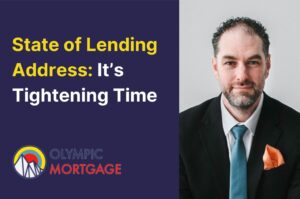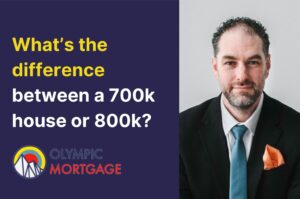[av_textblock textblock_styling_align=” textblock_styling=” textblock_styling_gap=” textblock_styling_mobile=” size=” av-medium-font-size=” av-small-font-size=” av-mini-font-size=” font_color=” color=” id=” custom_class=” template_class=” av_uid=’av-kyuj0xv8′ sc_version=’1.0′ admin_preview_bg=”]
3 Important Points To Consider on Rising Rates, Ahead of the BoC Rate Announcement.
[/av_textblock]
[av_textblock textblock_styling_align=” textblock_styling=” textblock_styling_gap=” textblock_styling_mobile=” size=” av-medium-font-size=” av-small-font-size=” av-mini-font-size=” font_color=” color=” id=” custom_class=” template_class=” av_uid=’av-kyuj54l7′ sc_version=’1.0′ admin_preview_bg=”]
With the impending Bank of Canada (BoC) decision on monetary policy tomorrow, there is a lot of talk about locking in, and guesses on how high the rate might eventually go.
I’ve seen the same patterns every cycle, and as I’ve been in banking since 2004, I’ve been through a few of these cycles. I hear all too often the familiar jargon – “interest rates are going up” and, “time to lock in”. These phrases are almost cliché, we hear it so much. It’s just easier to simplify the issue, isn’t it? However, these generalized phrases offer little to no context on the overall situation.
So, let me offer you some of that crucial context.
[/av_textblock]
[av_textblock textblock_styling_align=” textblock_styling=” textblock_styling_gap=” textblock_styling_mobile=” size=” av-medium-font-size=” av-small-font-size=” av-mini-font-size=” font_color=” color=” id=” custom_class=” template_class=” av_uid=’av-kyuj7qtj’ sc_version=’1.0′ admin_preview_bg=”]
1. Interest rates act in a cyclical fashion. Rates go up, and rates come down. When rates are going up, people forget that rates will ultimately come back down. When you look at any graph of the history of prime rate over time, you’ll see that rates tend to stay low for longer periods of time, and when rates go up, they stay up for a shorter period of time.
Five years is a long time. When people instinctively lock in, they forget that. History shows that after a year, or a year and a half of rates being high, they start to come back down. This is why people who take variable rates almost always do better than those who lock in. They endure through the shorter time frame of rates being comparatively high, and enjoy lower rates for a longer duration of that 5 year term.
[/av_textblock]
[av_textblock textblock_styling_align=” textblock_styling=” textblock_styling_gap=” textblock_styling_mobile=” size=” av-medium-font-size=” av-small-font-size=” av-mini-font-size=” font_color=” color=” id=” custom_class=” template_class=” av_uid=’av-kyuj8h50′ sc_version=’1.0′ admin_preview_bg=”]
2. The key word in the last sentence is “comparatively”. Meaning, that even when the variable rate goes up, it is still in fact lower than the 5 year fixed rate that you’d be locking into anyways. At their low point, variable rates were in the 1% to 1.25% range, just a month or two ago. Now, the variable rates are hovering in around 1.5% to 1.7%. Still, these rates are far lower than most lock in options, which are hovering between 2.6% and 3%.
So, the BoC rate would have to go up 4 or 5 times (in increments of .25%), for it to match what the 5 year fixed rate is right now. Consider also that it will take some time for the BoC to raise the rates, and after one or two hikes, they might even hold off from any further hikes.
My best guess is that the BoC will raise rates by 1% or so over the next year to year and a half. Maybe at the most, 1.25%. Given that the overnight rate is pegged at 0.25%, going to 1% or 1.5% is quadrupling the rate. The Bank of Canada wants to tamp inflation, but they do not want to stall lending and credit to the point where it is hurting our economy. The bank will be very cautious about raising the rates too high.
Remember, the BoC’s main mandate is to keep unemployment at its lowest level, and to ensure our economy keeps humming along, with slow and steady growth. This is the reason why the Bank has been waiting until now to raise the rates, and will probably not shock our market by raising rates too high.
[/av_textblock]
[av_textblock textblock_styling_align=” textblock_styling=” textblock_styling_gap=” textblock_styling_mobile=” size=” av-medium-font-size=” av-small-font-size=” av-mini-font-size=” font_color=” color=” id=” custom_class=” template_class=” av_uid=’av-kyujaaud’ sc_version=’1.0′ admin_preview_bg=”]
3. Fixed rates and variable rates do not go up and down at the same time, nor do they rise or fall at the same rate. 5 year fixed rates are based on bond yields which is determined by the bond market, not BoC monetary policy. Also, fixed rates almost always tend to rise before variable rates do.
Given that fixed rates bottomed out a year or so ago, at around 1.50%, and now they’re hovering in around 2.6% to 3%, my guess is that fixed rates are already at or nearing their peak. So the time to lock in has already come and gone.
[/av_textblock]
[av_textblock textblock_styling_align=” textblock_styling=” textblock_styling_gap=” textblock_styling_mobile=” size=” av-medium-font-size=” av-small-font-size=” av-mini-font-size=” font_color=” color=” id=” custom_class=” template_class=” av_uid=’av-kyujau5w’ sc_version=’1.0′ admin_preview_bg=”]
Will we see fixed rates go to 3.5% or even 4%? I highly doubt it, but even if they do, the rate will only hover there for a short period of time, and then come back down again.
[/av_textblock]
[av_textblock textblock_styling_align=” textblock_styling=” textblock_styling_gap=” textblock_styling_mobile=” size=” av-medium-font-size=” av-small-font-size=” av-mini-font-size=” font_color=” color=” id=” custom_class=” template_class=” av_uid=’av-kyuiziou’ sc_version=’1.0′ admin_preview_bg=”]
Just look at the world we live in. Things happen. The pandemic. Fires. Floods. And now most recently, the threat of war. What if the US and Russia engage over The Ukraine? Rates will drop like a rock. Even if we avoid a war, which I surely hope, there is mounting political unrest, especially south of the border. A looming mid-term election in the United States could see a shift in the balance of power back to the republican right. Shortly thereafter, we may very well see Trump and his team gearing up to win back the conservatives in the primaries, and become the republican candidate for 2024, which will cause more unrest. Needless to say, uncertainty in politics, and our world, is becoming the norm. When anything happens, political or not, it sows uncertainty and disruptions in our markets, and interest rates drop.
What is the main message here? The main message is that the long term benefits of lower variable rates outweigh the smaller and more manageable risks of higher interest rates. There are too many factors that are going to keep driving our rates down over the long term, even if in the short term, rates go up.
If you are in a lower variable rate, hold on now through this part of the cycle. If your mortgage is up for renewal, buck the trend and opt for the variable rate, because ultimately you’ll save yourself money.
As always, if you want to hear more about this, and talk about mortgages or our real estate market in general, please join us for one of our upcoming webinars where all topics are covered and all questions answered. Webinar details are emailed out in advance – sign up for our emails below!
Signing off,
Your Friendly Expert Mortgage Broker,
David Steinberg, AMP, BComm
Owner, and Lead Broker
Olympic Mortgage Corporation
[/av_textblock]
[av_hr class=’default’ icon_select=’yes’ icon=’ue808′ position=’center’ shadow=’no-shadow’ height=’50’ custom_border=’av-border-thin’ custom_width=’50px’ custom_margin_top=’30px’ custom_margin_bottom=’30px’ custom_border_color=” custom_icon_color=” av-desktop-hide=” av-medium-hide=” av-small-hide=” av-mini-hide=” id=” custom_class=” template_class=” av_uid=’av-2pykzx’ sc_version=’1.0′]




